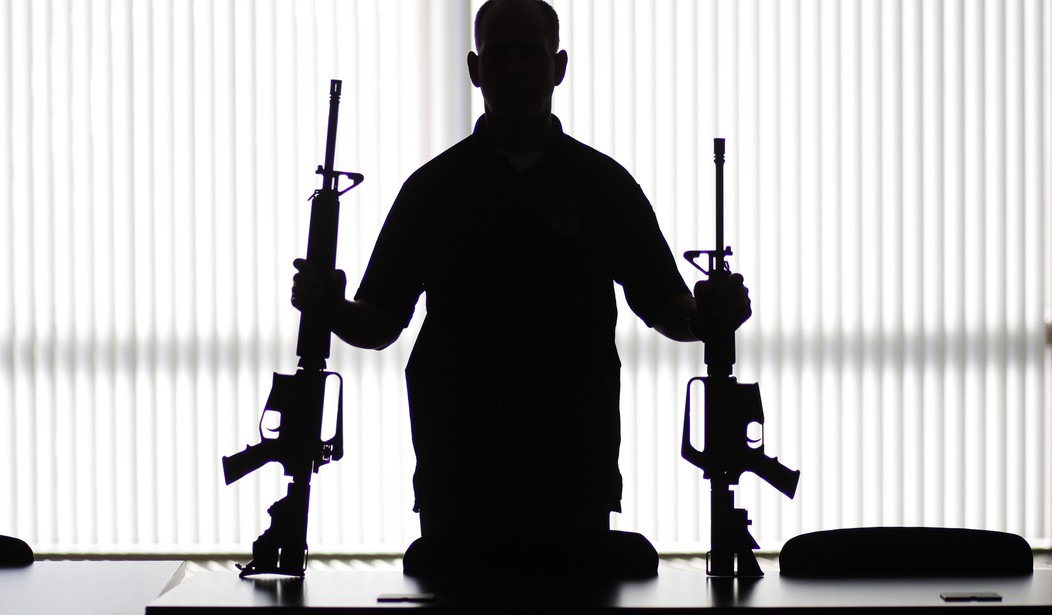Two weeks after the Bureau of Alcohol, Firearms, Tobacco, and Explosives sent out a press release touting its proposed rule to dramatically expand the definition of what constitutes a firearm under federal law, the proposal has officially been published in the Federal Register. That means the 90 day public comment period is now open, and gun owners (along with their anti-gun counterparts) can weigh in on the proposed changes until August 19th.
The ATF’s summary of the proposed rule gives some indication of its scope and sweep:
The Department of Justice (“Department”) proposes amending Bureau of Alcohol, Tobacco, Firearms, and Explosives (“ATF”) regulations to provide new regulatory definitions of “firearm frame or receiver” and “frame or receiver” because the current regulations fail to capture the full meaning of those terms. The Department also proposes amending ATF’s definitions of “firearm” and “gunsmith” to clarify the meaning of those terms, and to provide definitions of terms such as “complete weapon,” “complete muffler or silencer device,” “privately made firearm,” and “readily” for purposes of clarity given advancements in firearms technology. Further, the Department proposes amendments to ATF’s regulations on marking and recordkeeping that are necessary to implement these new or amended definitions.
These aren’t minor technical changes, and the ATF’s attempted justification to redefine the terms “frame or receiver” illustrates why the agency never attempted to do make these changes before now. As the ATF says in the proposed rule published today:
Although the new definition would more broadly define the term “frame or receiver” than the current definition, it is not intended to alter any prior determinations by ATF of what it considers the frame or receiver of a particular split/modular weapon. ATF would also continue to consider the same factors when classifying firearms.
In other words, the ATF wants to expand the definition of a frame or receiver, it also doesn’t want to go back on 50 years worth of prior determinations. In essence, the agency wants to have it both ways; requiring manufacturers to rely on both the new proposed definitions as well as adhering to the previous determinations published by the agency since the Gun Control Act of 1968 took effect.
The proposed rule repeatedly talks about the “flexibility” of their new proposed definitions of “firearm frame or receiver,” “firearm,” “muffler or silencer device.” That flexibility is designed to benefit the ATF, not firearms manufacturers, by casting as broad a net as possible over the manufacturing process. Even incomplete frames and receivers could be considered completed under the definition proposed by the ATF, and the agency’s vague definitions don’t provide clear-cut guidance to those making firearms or firearm parts.
This third supplement would define “frame or receiver” to include “in the case of a frame or receiver that is partially complete, disassembled, or inoperable, a frame or receiver that has reached a stage in manufacture where it may readily be completed, assembled, converted, or restored to a functional state.” To determine this status, “the Director may consider any available instructions, guides, templates, jigs, equipment, tools, or marketing materials.” For clarification, “partially complete” for purposes of this definition “means a forging, casting, printing, extrusion, machined body, or similar article that has reached a stage in manufacture where it is clearly identifiable as an unfinished component part of a weapon.”
In other words, a incomplete receiver could be considered a firearm under this proposed rule based on a number of other factors beyond the gun part itself, as opposed to a simple definition of “an incomplete receiver is determined to be a firearm when it is ‘x’ percent completed.” The ATF is trying to give itself as much wiggle room as possible at the expense of clarity to the firearms industry and anyone hoping to build their own firearm. Remember, any violation of the vague standards proposed by the ATF could result in federal charges or sanctions against manufacturers and DIY gun makers, which is why the industry has been asking for clear cut standards that are easy to follow. That’s not what the ATF delivered with this new proposed rule.
It’s going to take some time for industry officials and attorneys with Second Amendment organizations to pore over the fine print in the ATF’s new proposal, but we’ll be talking with those within the firearms industry as well as 2A organizations about the devil in the details in the days ahead to further identify the issues and problems within the new proposed rule to help gun owners with their objections when submit their public comments.









Join the conversation as a VIP Member